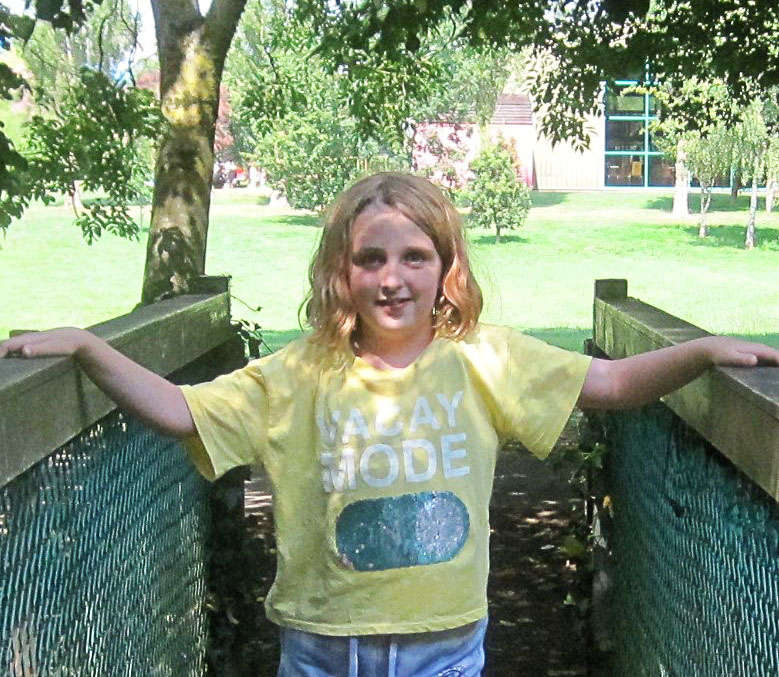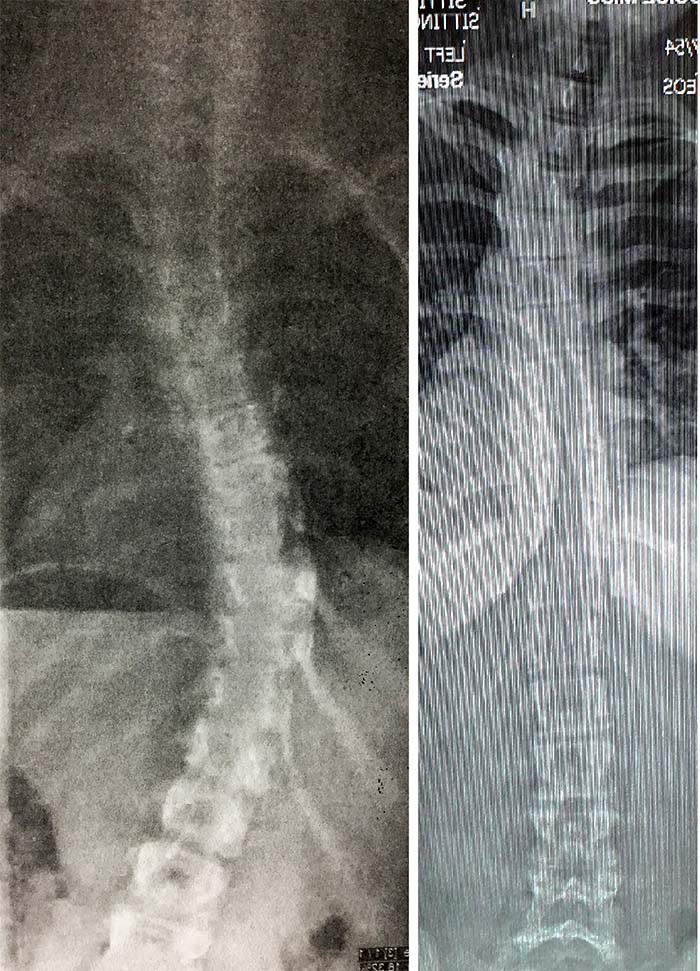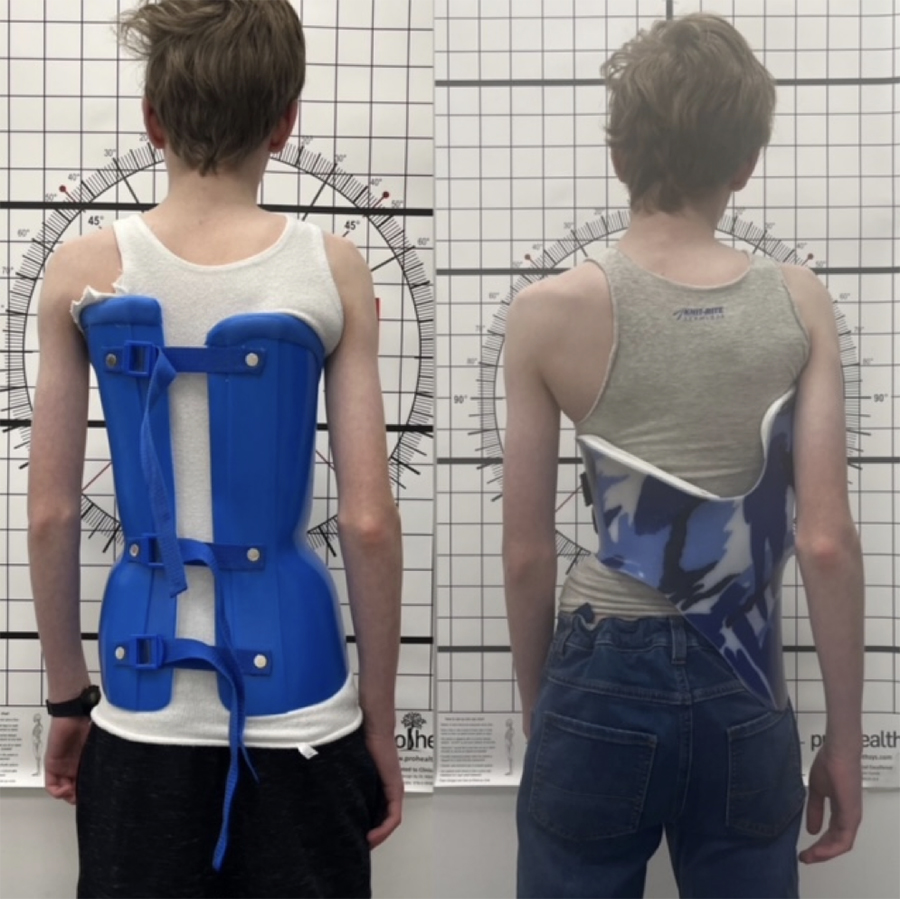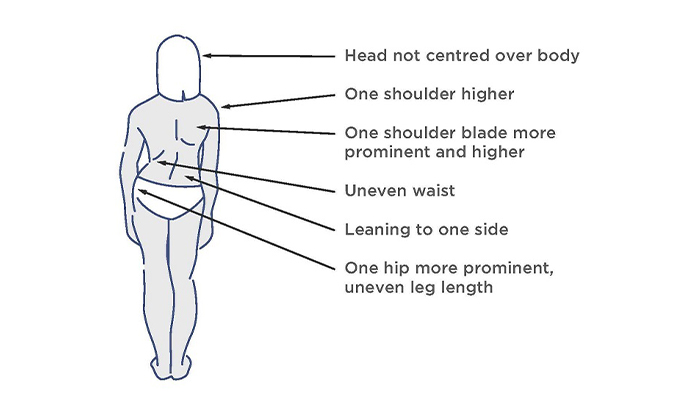
17 April 2023
Helen first found out that her daughter Harriet had scoliosis when her sister-in-law Lucy Best was visiting them in 2018. Helen recalls: “Lucy said, ‘I think Harriet might have scoliosis’. It was really scary. Lucy is an orthotist and has her own clinic, Hampshire Orthotics, so we knew that if Lucy thought there was a problem, there probably was.”
A diagnosis of idiopathic scoliosis was confirmed by the family GP and they were referred to Southampton hospital. The consultant recommended wearing a Boston Brace prior to surgery when Harriet was older. “My husband Tom and I were instinctively against surgery and started doing a lot of research, Lucy also chipped in as she said that the Boston Brace did not always produce the best results; she then told us about the London Orthotic Consultancy”. By one of those strange coincidences, Lucy had been working with LOC for many years as she prescribes the LOCband, a cranial remoulding helmet for babies with positional plagiocephaly, and she knew that LOC also treated scoliosis non-surgically.
Harriet was first seen by LOC in November 2018 when she was 10, she had a significant thoracic lumbar curve with a Cobb angle of 42 degrees. At that time, LOC was prescribing the Cheneau-Gensingen brace which works three-dimensionally to reduce the patient’s curve.

Before and after x-rays showing Harriet's scoliosis curve. Left: 42 degree curve. Right: 5 degrees at latest review appointment.
Helen recalls: “To be frank, at the beginning it was hard, Harriet was upset by the prospect of wearing a brace for 23 hours a day. The turning point came when she attended a group scoliosis physiotherapy session at the clinic (these were pre-Covid days) and she joined in a session with about 20 other girls, all wearing their braces. And these girls just nattered about the things girls of that age talk about and Harriet realized she was not alone, and that scoliosis did not have to define her or her life.
This new attitude carried into school where she gave a talk to her class about scoliosis and what it was and her treatment regime. It helped that the brace could be worn under her school shirt and was not noticeable; she never had any issues from other children.”
At the last review, Harriet’s curve was down to 5 degrees which is so small it is no longer defined as a scoliosis curve. Harriet, now in a LOC Scoliosis Brace, only has to wear the brace at night. However, as she is still young, her Risser sign (a measure of skeletal maturity) is three and she will need to continue with treatment until she is fully mature.
Lucy says: “I feel like Harriet is in very good hands with LOC and the support they have given her is fantastic.”
Helen concludes: “One of the things I really like about LOC is that they talk to Harriet and treat her like a real person. It has been and continues to be a really positive relationship. LOC has done a fantastic job; I know we wouldn’t have got the same results anywhere else.”

Left: The Boston Brace, which has to be tied from behind. Right: LOC’s Scoliosis Brace, which ties from the side so patient can do by themselves
Especially in young people, spotting the early signs of scoliosis is important – as is seeking early treatment. These are the warning signs to look out for:

Visual signs of Scoliosis
You can find out more about the visual signs of scoliosis here.
Find out more information about the LOC Scoliosis Brace
If you think your child, adolescent or adult family member has scoliosis, you can contact LOC directly to arrange a consultation at one of our scoliosis clinics.
If your child has recently been diagnosed with Scoliosis or you think they are showing signs of the condition, please contact us.
Scoliosis is a condition where there is an abnormal curvature of the spine. It is a three-dimensional condition with deviation of the vertebrae in the sagittal, coronal and transverse planes.
Treatment recommendations are based on the Cobb angle of the patient and the risk of progression. For curves under 20 degrees, we monitor the patient’s curve while the patient undertakes a tailored exercise programme based on Schroth principles; this is delivered by our partner in providing scoliosis treatment, Scoliosis SOS.
For curves above 20 degrees, we prescribe our LOC Scoliosis Brace which works three-dimensionally to guide the patient’s spine into a more correct position, substantially reducing their Cobb angle. For optimum correction, we recommend that bracing is combined with specialist physiotherapy.
This joint approach means our patients are getting the best and most appropriate advice from two scoliosis specialists, one with an orthotic perspective and one with a physiotherapy perspective.
LOC makes the vast majority of orthotics we fit, and our scoliosis brace is no exception. It is difficult to over-emphasize how important it is to have our own manufacturing unit on site. Lead times are shorter because we are not reliant on outside suppliers, and we can fine-tune our braces at the fitting stage to ensure optimum efficacy and comfort.
The LOC Scoliosis Brace is a 3D, hypercorrective, Cheneau-Gensingen derivative brace, known as one of the most corrective and modern scoliosis braces available in the UK. It is designed to:
The brace is entirely unique and tailored to the patient’s spinal curve pattern, ensuring optimal skeletal correction while prioritising comfort.
Unlike traditional braces, it opens from the front for easier self-application and maintains a low profile under clothing.
The LOC Scoliosis Brace is worn 22 hours a day (including nighttime) and works in conjunction with Schroth-based therapy for maximum results.
Typically, there is an initial consultation followed by a fitting appointment and then pre- and post-reviews after in-brace x-rays; thereafter reviews every three months until the end of treatment. For the majority of our patients who are adolescents, we believe it is essential that there are regular assessments and reviews to ensure that the brace is fitting well; we will make tiny adjustments to the brace to ensure optimum comfort and optimum correction. We have found that comfort is a major contributor to an individual’s compliance with the prescribed wearing regime. In addition, the close contact between patient and clinician ensures patient motivation resulting in better outcomes at the treatment end.
We are pleased to offer a free-of-charge, virtual assessment should you wish to be screened for scoliosis. If we feel a referral to an Orthopaedic Consultant is warranted, we recommend a consultation at The Wimbledon Clinic, Parkside with Mr Darren Lui, Mr Jason Bernard or Mr Tim Bishop. The consultant would arrange the imaging as required. Obviously, you can also seek advice from your family GP.